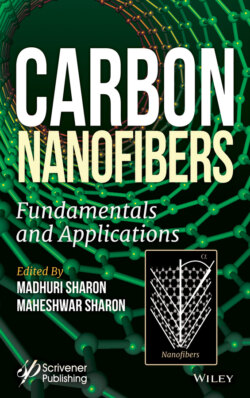Читать книгу Carbon Nanofibers - Группа авторов - Страница 79
3.3.6 Biogenic Synthesis (Green Synthesis) Method of Metal Nanoparticles
ОглавлениеGreen or Biogenic synthesis is an eco-friendly protocol for synthesis of a wide range of nanomaterials, including metal and metal oxides such as gold (Au), silver (Ag), copper oxide (CuO), and zinc oxide (ZnO), using various biological materials such as bacteria, fungi, algae, and plant extracts. Biogenic synthesis is also called Green synthesis because it prevents or minimizes waste; there is reduction of derivatives and pollution, and the use of safer (or nontoxic) solvent and auxiliaries as well as renewable feedstock. The reaction parameters for biogenic synthesis involve solvent, temperature, pressure, and pH conditions (acidic, basic, or neutral). Availability of effective phytochemicals in various biological materials that act as reducing agents that convert metal salts into metal nanoparticles are ketones, aldehydes, flavones, amides, terpenoids, carboxylic acids, phenols, reductase, and ascorbic acids. Green synthesis of metallic nanoparticles is a one-pot or single-step eco-friendly bio-reduction method that requires relatively low energy to initiate the reaction.
Bacteria can synthesize metal NP both internally (intracellular) and externally (extra-cellular). Some examples of bacterial strains that have been extensively exploited for the synthesis of bio-reduced silver nanoparticles with distinct size and shape morphologies include: Aeromonas sp. SH10, Arthrobacter gangotriensis, Bacillus amyloliquefaciens, Bacillus cecem-bensis, Bacillus cereus, Bacillus indicus, Bacillus subtilis, Corynebacterium sp. SH09, Enterobacter cloacae, Escherichia coli, Geobacter spp., Lactobacillus casei, Phaeocystis antarctica, Plectonema boryanum UTEX 485, Pseudomonas proteolytica, Rhodopseudomonas capsulata, Shewanella algae, and Shewanella oneidensis [12, 13]. To synthesize metal NPs, microbes, fungi or algae first capture the metallic ions on the surface via electrostatic interactions between ions and negatively charged cell wall enzymes or inside the microbial cells, and then the metal ions are reduced into metal nuclei, which subsequently grow into nanoparticles by the action of enzymes or reducing agents. The two identified reducing agents in the biosynthesis of nanoparticles are NADH (nicotinamide adenine dinucleotide) and NADH-dependent nitrate reductase [14].
Fungi: Fungi-mediated biosynthesis of metal and metal oxide nanoparticles is also a very efficient process for the generation of monodispersed nanoparticles of metal/metal oxide of silver, gold, titanium dioxide and zinc oxide, with well-defined morphologies. They act as better biological agents for the preparation of metal and metal oxide nanoparticles, due to the presence of a variety of intracellular enzyme [15] as well as enzymes/proteins/ reducing components present on the cell surfaces [16].
Plants: Plants have biomolecules like carbohydrates, proteins, and coenzyme with exemplary potential to reduce metal salt into nanoparticles. Various plants, such as Aloe bar-badensis, Avena sativa, Medicago sativa, Ocimum sanctum, Citrus limonia, Azadirachta indica, Hibiscus rosa-sinensis, Coriandrum sativum, Camellia sinensis, Brassica juncea, Cymbopogon flexuosus, Helianthus annuus, Acalypha indica, and Calotropis gigantean, have been utilized to synthesize silver, gold and ZnO nanoparticles [17–19]. Various nano-metal catalyst synthesis approaches are presented in Figure 3.4.
Plant leaf extracts play a dual role by acting as both reducing and stabilizing agents in nanoparticles synthesis [20]. The phytochemicals present in them that support the synthesis of nano-metals by bio-reduction are flavones, terpenoids, sugars, ketones, aldehydes, carboxylic acids, and amides. Flavonoids contain various functional groups, which have an enhanced ability to reduce metal ions (Figure 3.5). The reactive hydrogen atom is released due to tautomeric transformations in flavonoids by which the enol form is converted into the keto form. This process is realized by the reduction of metal ions into metal nanoparticles. In sweet basil (Ocimum basilicum) extracts, enol to keto transformation is the key factor in the synthesis of biogenic silver nanoparticles [21]. Monosaccharide glucose present in plant is capable of participating in the formation of metallic nanoparticles with different sizes and shapes, whereas fructose-mediated gold and silver nanoparticles are monodispersed in nature [22]. Proteins with functionalized amino groups (–NH2) and amino acids (viz, cysteine, arginine, lysine, and methionine) also have different ways of reducing the metal ions. Moreover, the functional groups (such as –C–O–C–, –C–O–, –C=C–, and –C=O–) present in phytochemicals, such as flavones, alkaloids, phenols, and anthracenes, are the capping ligands of the nanoparticles and can help to generate metallic nanoparticles [23].
Figure 3.4 Different synthesis approaches available for the preparation of metal catalysts.
Figure 3.5 The process of nanoparticle formation by plant extract. (Source: Dizai et al. 2014) [24].
